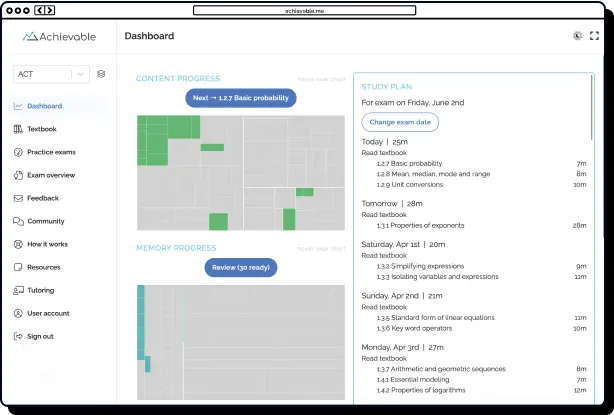
Ace the USMLE: Advanced dermatology strategies for top scores




Table of contents
- Overview of high-yield dermatologic disorders for the USMLE
- Dominate the USMLE: essential dermatology disorders you must know
- Target the cases that the USMLE Step 1 favors most
- Essential dermatology disorders for Step 2 CK
- Dermatology's importance on the USMLE Step 2 - and how to prepare
- How dermatology differs between Step 1 and Step 2 CK, and what that means for you
- Why dermatology mastery sharpens both your USMLE scores and clinical skills
- Last week before the exam: strategic dermatology review for maximum impact
- Active recall: prioritize Q&A over passive reading
- Visual pattern drills: prepare for real exam pressure
- Use technology to fill knowledge gaps fast
- Stay ahead: strategies for keeping up with USMLE dermatology updates
Welcome to our 6-part United States Medical Licensing Examination (USMLE) dermatology series, where we provide you with all the information you need to study for and ace dermatology-related questions and vignettes on your medical residency exams. In part 1, we go over the main conditions, symptoms, and related concepts you should know for the USMLE Steps 1 and 2, and how to prepare yourself for exam success.
As a medical student preparing for the USMLE, you know that every question counts. Dermatology is an underemphasized topic on the test, and trainees often encounter a lot of difficulty correctly diagnosing skin diseases in practice. Building strong dermatology skills is not just valuable for patient care; it's a key strategy for maximizing your exam score and achieving your residency goals.
USMLE dermatology questions go far beyond simple rash recognition. You'll be expected to interpret clinical images, evaluate epidemiologic data, understand immunopathology, and apply nuanced management strategies in complex vignettes. The highest performers are those who can quickly identify question patterns, use risk factors to rule out distractors, and apply clinical reasoning to a wide range of patient presentations.
This article is designed specifically for USMLE candidates seeking to master dermatology or who find these concepts challenging. Here's what you'll learn:
- The most testable dermatologic diagnoses and question formats for Step 1 and Step 2
- Diagnostic frameworks and key epidemiologic clues to distinguish between similar skin conditions
- How to recognize the links between cutaneous findings and systemic disease
- Proven strategies for recall, clinical reasoning, and high-yield review to strengthen your dermatology performance
If you're ready to transform dermatology from a challenge into a scoring opportunity, this guide will help you focus your efforts and succeed on exam day.

Overview of high-yield dermatologic disorders for the USMLE
Dominate the USMLE: essential dermatology disorders you must know
As a USMLE examinee aiming for a top score, you need to efficiently recognize dermatologic conditions commonly tested across Step 1 and Step 2 CK. This section provides concise, exam-focused coverage of high-yield skin disorders, emphasizing diagnostic clues, pathophysiology, and clinical reasoning - the hallmarks of top USMLE performance.
Skin cancers are frequently tested. For example, basal cell carcinoma (BCC), the most common malignant skin tumor, typically presents as shiny, pearly papules or nodules with rolled borders on sun-exposed areas (e.g., upper lip, medial canthus). USMLE questions often highlight surface telangiectasias (overview; pattern recognition videos).
Squamous cell carcinoma (SCC) vignettes stress precursor lesions like actinic keratosis, chronic ulceration, and HPV infection as risk factors - especially for genital SCC.
Melanoma, the most aggressive skin cancer, is assessed through the ABCDE criteria: asymmetry, border irregularity, color variation, diameter >6 mm, and evolution. USMLE vignettes often focus on prognosis, with Breslow depth (vertical tumor thickness) as the most important prognostic factor (lecture reviews).
Dermatitis conditions are USMLE staples:
- Atopic dermatitis (eczema) is frequently presented within the 'atopic triad' (asthma, allergic rhinitis, eczema) (specialty dashboard).
- Contact dermatitis is a classic example of type IV (delayed, T-cell mediated) hypersensitivity, often described as linear vesicular rashes from poison ivy exposure.
Psoriasis is another high-yield topic. Look for sharply demarcated plaques with silvery scales, nail pitting, and HLA-Cw6 association (psoriasis focus points).
Blistering diseases are exam favorites and require precise differentiation:
- Pemphigus vulgaris: positive Nikolsky sign, anti-desmoglein-3 IgG, intraepidermal blisters.
- Bullous pemphigoid: negative Nikolsky sign, antibodies to BP180/BP230, subepidermal bullae.
Dermatitis herpetiformis features intensely pruritic, grouped vesicles on extensor surfaces, commonly associated with celiac disease. IgA deposits in dermal papillae are a diagnostic hallmark.
Xeroderma pigmentosum illustrates defective nucleotide excision repair, leading to severe photosensitivity and early-onset skin cancers - a classic integrative vignette combining genetics, immunology, and pathology (overview videos).
USMLE dermatology preparation tips:
- Prioritize studying clinical images, histopathology, and connections across organ systems.
- Relate visual findings to underlying pathophysiology - this is crucial for both Step 1 and Step 2 CK.
High-performing examinees distinguish themselves through diagnostic reasoning and understanding of disease mechanisms, not just memorization.
Target the cases that the USMLE Step 1 favors most
To perform well on Step 1, focus your study on the most common dermatology topics tested. Mastery of these core disorders will give you a strategic edge.
Classic Step 1 conditions and their exam clues:
- Atopic dermatitis (eczema): presents as itchy, erythematous plaques in flexural areas, usually in patients with a personal or family history of the atopic triad. It is a prototype for IgE-mediated (type I) hypersensitivity.
- Psoriasis: look for well-demarcated erythematous plaques with silvery scale, especially on extensor surfaces. High-yield associations: Koebner phenomenon, psoriatic arthritis, HLA-Cw6.
- Contact dermatitis: vignettes often mention triggers like nickel or poison ivy, highlighting type IV hypersensitivity mechanisms. Be ready to identify immunologic pathways and common exposures.
- Skin cancers: know the distinguishing features - BCC (pearly rolled borders, telangiectasias), SCC (preceded by actinic keratosis), and melanoma. Chronic sun exposure is a classic SCC risk factor.
- Urticaria (hives): characterized by transient, pruritic wheals with central pallor, resolving within hours - typically IgE-mediated.
- Seborrheic dermatitis: appears as greasy, yellowish scales on the scalp (dandruff) or nasolabial folds, often associated with Malassezia yeast.
Why this matters: Medbullets and NBME data show that atopic dermatitis, psoriasis, and contact dermatitis make up a large part of Step 1 dermatology questions. The USMLE emphasizes "papulosquamous and eczematous dermatoses" on the exam.
Focus on clinical presentations, immune mechanisms, and classic triggers - these are the questions that set apart high scorers on Step 1.

Essential dermatology disorders for Step 2 CK
Step 2 CK challenges you to rapidly diagnose and manage high-yield dermatology cases in clinical vignettes. Expect a heavier focus on management and distinguishing between look-alike diseases.
Key Step 2 CK topics:
- Autoimmune blistering diseases:
- Pemphigus vulgaris: fragile, flaccid bullae, oral involvement, positive Nikolsky sign (IgG against desmoglein-3).
- Bullous pemphigoid: tense, subepidermal blisters, no mucosal involvement, negative Nikolsky sign (antibodies to BP180/BP230). Differentiating these is a frequent test topic (guide).
"Step 2 emphasizes immunologic targets: pemphigus affects desmoglein; pemphigoid targets hemidesmosomes. Identify these links in each scenario."
- Life-threatening drug reactions: Stevens-Johnson syndrome (SJS) and toxic epidermal necrolysis (TEN) are tested with a focus on drug triggers (allopurinol, phenytoin, carbamazepine, sulfonamides). Know how to distinguish SJS (<10% BSA) from TEN (>30%) and the importance of immediate drug withdrawal (content details).
- Cutaneous malignancies:
- Actinic keratosis: precursor to SCC.
- Melanoma: Breslow depth is the key prognostic marker (melanoma prognosis).
- Inflammatory and chronic skin diseases:
- Seborrheic dermatitis: flaky, erythematous patches on scalp/face, best treated with topical antifungals.
- Contact dermatitis: be ready to distinguish allergic vs. irritant types and know first-line management.
- Hidradenitis suppurativa: painful, recurrent abscesses in intertriginous areas; severe cases may require TNF-α inhibitors. These often appear in questions about diagnosis and management (more Step 2 concepts).
- Vitiligo: commonly tested with associated autoimmune diseases (celiac, thyroiditis).
Step 2 CK rewards examinees who connect clinical findings, pathophysiology, and appropriate management. Your ability to reason through dermatology vignettes, not just recall, will set you apart.
Dermatology's importance on the USMLE Step 2 - and how to prepare
With Step 1 now pass/fail, Step 2 CK is the main numerical filter for dermatology applicants. A recent survey reveals that 63.63% of program directors require Step 2 CK scores before interviews (PMC study).
Dr. Anthony M. Rossi summarizes: "With Step 1 now pass/fail, Step 2 CK has effectively become the new Step 1 for competitive specialties like dermatology."
Your success now depends on advanced dermatology knowledge and clinical diagnostic skill - especially for Step 2 CK. Shape your preparation with this in mind.
How dermatology differs between Step 1 and Step 2 CK, and what that means for you
Dermatology is important on both exams, but each step assesses different competencies:
Step 1:
- Emphasizes basic science: anatomy, histology, pathophysiology, immunology
- Questions focus on molecular targets, structure-function, and immune mechanisms
- Vignettes prioritize foundational science over detailed clinical scenarios
Step 2 CK:
- Prioritizes clinical reasoning, diagnosis, and patient management
- Tests pattern recognition, treatment selection, and links to systemic disease
- Image-based questions often require rapid identification and management choices
These trends are supported by leading resources (exam analysis; score breakdown). The USMLE does not release a detailed dermatology blueprint, so align your studies with NBME and FSMB content outlines.
Strategy: regularly review official USMLE guides to keep your preparation focused on current exam priorities.
Why dermatology mastery sharpens both your USMLE scores and clinical skills
Dermatology accounts for about one-tenth of USMLE questions (official outline), and each additional correct answer can boost your score percentile.
In clinical practice, dermatologic conditions make up 9% of U.S. outpatient visits (source), yet diagnostic accuracy is low. Dermatology consults alter diagnoses or management in many inpatient cases - highlighting the practical value of strong dermatology knowledge.
Image-based questions are common on the USMLE, requiring you to distinguish visually similar rashes and integrate findings from multiple specialties. High-yield conditions like melanoma (Breslow depth) and pemphigus vulgaris demand both precise lesion description and systemic thinking (question examples).
"Studying skin & subcutaneous tissue is a crucial aspect of preparing for the exam, as it is one of the topics covered in the Step 1 Content Outline and Specifications." - JungleAI tips for flashcards and more
Strong dermatology skills help you succeed on the USMLE - and improve real-world patient care.

Last week before the exam: strategic dermatology review for maximum impact
In your final week, concentrate on the top 15-20 high-yield dermatology conditions: psoriasis, atopic dermatitis, actinic keratosis, pemphigus vulgaris, and Stevens-Johnson syndrome consistently appear on the USMLE (high-yield Step 2 topics; study strategies).
Active recall: prioritize Q&A over passive reading
Engage in active recall using flashcards or question banks. Focus on diagnostic criteria, first-line treatments, and classic associations (e.g., dermatitis herpetiformis with celiac disease and granular IgA deposits in dermal papillae). Active recall is proven to enhance retention (review guide).
Visual pattern drills: prepare for real exam pressure
Approximately one-third of dermatology questions feature images. Allocate 40-50% of your study time to timed, image-based case practice. Train to differentiate similar conditions (like bullous pemphigoid vs. pemphigus vulgaris) within 60-90 seconds per question (study strategies).
Use technology to fill knowledge gaps fast
Leverage AI-powered dermatology flashcards and scenario generators for tailored, high-yield review in your final days.
A focused, high-yield review plan in the last week maximizes your dermatology score impact.
Stay ahead: strategies for keeping up with USMLE dermatology updates
Staying current with dermatology content is crucial for USMLE success. The exam is regularly updated to reflect new clinical guidelines and emerging topics (USMLE Content Outline).
To stay up-to-date:
- Monitor official USMLE content outlines. Updates reflect peer-reviewed changes (program updates) and now include topics like gender-affirming care and veteran health.
- Plan quarterly reviews of the 'skin & subcutaneous tissue' section. Track new or shifting priorities.
"Top scorers don't just study dermatology - they study how dermatology is tested, which requires constant vigilance about examination evolution." -Dr. Sarah Thompson, dermatology residency director
- Use third-party sites for update alerts. AMBOSS promptly updates dermatology content (content update feed), expanding coverage of skin infections and pigmentary disorders.
- Practice with new, targeted question sets. Try The Doctor's Channel's 100-question dermatology review for practice with the latest high-yield cases.
- Subscribe to USMLE and FSMB alerts. Receive notifications on exam content changes.
Following these strategies ensures you're prepared for evolving, high-impact dermatology topics on the USMLE.
Click here for part 2, "Integrate dermatology with infectious disease and immunology." Read on to find out how to leverage your knowledge of other scientific and medical disciplines for effective dermatological diagnoses.

